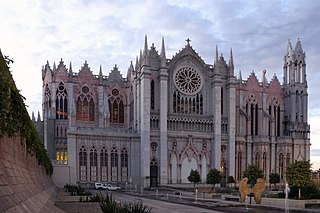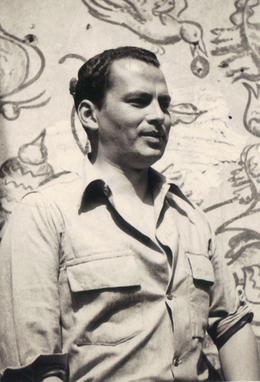
Guanajuato is a city and municipal seat of the municipality of Guanajuato in central Mexico and the capital of the state of the same name. It is part of the macroregion of the Bajío. It is in a narrow valley, which makes its streets narrow and winding. Most are alleys that cars cannot pass through, and some are long sets of stairs up the mountainsides. Many of the city's thoroughfares are partially or fully underground. The historic center has numerous small plazas and colonial-era mansions, churches, and civil constructions built using pink or green sandstone. The city historic center and the adjacent mines were proclaimed a World Heritage Site by UNESCO in 1988.

Guanajuato, officially the Free and Sovereign State of Guanajuato, is one of the 32 states that make up the Federal Entities of Mexico. It is divided into 46 municipalities and its capital city is Guanajuato.

El Bajío is a cultural and geographical region within the central Mexican plateau which roughly spans from north-west of the Mexico City metropolitan area to the main silver mines in the northern-central part of the country. This includes the states of Querétaro, Guanajuato, parts of Jalisco, Aguascalientes and parts of Zacatecas, San Luis Potosí and Michoacán.

Josefina Echánove was a Mexican film, television and stage actress. She received two Ariel Award nominations for her acting roles.
Aurelio Nuño Morales was a Mexican architect.

Vladimir Cora is a Mexican painter and sculptor based in the state of Nayarit, whose work has been recognized by various awards and membership in the Salón de la Plástica Mexicana. He discovered art at age fifteen, after deciding that he could not be a musician. He received training in Tijuana and Mexico City, with his first success in the 1980s. His style has been described as neo-figurative, minimalist and coarse, and he creates his works in series usually related to the apostles, flowers, birds and women, especially those related to Nayarit. He has had over 150 individual exhibitions both in Mexico and abroad and continues to work from his home state.

The La Valenciana or San Cayetano church is an 18th-century Mexican Churrigueresque church built at the opening of the La Valenciana mine, the site of the largest vein of silver found in Mexico. It was built by Antonio de Ordóñez y Alcocer, the owner of the mine, to give thanks to his patron saint, Saint Cajetan, for the riches the mine provided. The church is noted for use of gold leaf, especially the main altarpieces which are completely covered in the metal. The church is also a site of the Festival Internacional Cervantino.
Flor Minor is a Mexican sculptor and graphic artist, known for bronze sculptures and graphic work that generally depict the male form. Her works often are based on the concept of balance or lack thereof. Minor has had individual exhibitions in notable venues in Mexico and abroad, and her work can be found in a number of public and private collections. She has been recognized in Mexico with membership in the Salón de la Plástica Mexicana.

Tomás Chávez Morado was an artist from Silao, Guanajuato, Mexico. He taught at public schools, the Instituto Nacional de Bellas Artes y Literatura, and the Escuela de Artes Plásticas at the Universidad de Guanajuato, where he served as the director of the School of Visual Arts. His civic installations include El Paraguas and the national shield carving displayed at the National Museum of Anthropology in Mexico City as well as 260 monumental eagle head sculptures marking the route of Hidalgo the Liberator. According to Mexican Life, Mexico's Monthly Review, the work of Chávez Morado "creates visions of typical life in the streets, images of people one might find in the markets, at the ferias or inside the tenement patios, with a thematic emphasis on love and the mother and child."
This is a list of events that happened in 2016 in Mexico. The article also lists the most important political leaders during the year at both federal and state levels.
This is a list of events that happened in 2017 in Mexico. The article also lists the most important political leaders during the year at both federal and state levels.
Javier San Román Celorio is a Mexican football manager, executive and former player. He is the brother of the former football player and executive Santiago San Román.

José Refugio Reyes Rivas was a Mexican architect, author of some of the most representative buildings of the city of Aguascalientes, where his work is considered part of the historical and architectural heritage. Reyes did not have professional architectural studies, so he is called "empirical architect". In 1985 he received the post mortem title of architect, granted by the Autonomous University of Aguascalientes. Reyes completed more than 200 buildings in the states of Zacatecas, Jalisco and Aguascalientes. He was characterized by his use of diverse decorative styles, from neoclassical to Art Nouveau, as well as construction innovations of the first half of the 20th century.




































